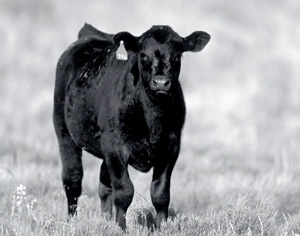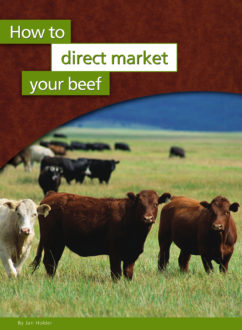
The first thing that you have to do is to identify your strengths and weaknesses. This sounds really simple, but we’ve found that it actually takes quite a bit of time. We wasted a lot of time trying to follow the models of some pretty brilliant people, only to get a ways down the road and find out that, given our particular set of circumstances, we couldn’t go that route. So first off, do your homework. Make a list of what you have to work with.
Your team:
- Your family’s background. This is a group effort.
- Your personality. How do you deal with others? Would you enjoy making a “cold” sales call?
- Your education and experience.
Your physical resources:
- The size of your ranch.
- The number and breed of cattle.
- The ranch’s history, layout, elevation and character.
- If pesticides, non-organic fertilizers or herbicides have been used.
- If any part is irrigated or able to be irrigated.
- The condition of the pastures.• Water availability.
- If you own, or have access to, scales.
Your location:
- The distance to a town.
- The distance to a major metropolitan area.
- The nearest processing facility – and its willingness to train you.
Economics:
- Your economic situation. Do you have savings to support you during transition?
- How much money does the ranch need to produce, both short and long term?
- How much cash reserve do you have?
- What is your available credit?
- Can you afford to break even or even lose money for a few years? The general rule is to expect seven years to establish a profitable direct-market business.
Supporting resources such as:
- Small Business Development Centers. The U.S. Small Business Administration runs these programs to provide management assistance to current and prospective small business owners. www.sba.gov/sbdc/
- Extension staff with experience in direct meat marketing.
- Private consultants.
Answer all of these questions before you proceed. Every factor will play a part in deciding what type of operation is the best for you. For example, if you are located fairly close to a metropolitan area, your family has some experience with direct sales, and you like dealing with people, the Joel Salatin model may be the best for you. Then again, if you don’t like direct sales, and you are located way out in the boonies, then you may want to have a distributor sell for you.
You may want to consider writing a business plan. For help, consult Building a Sustainable Business, a handbook from SARE Outreach.
